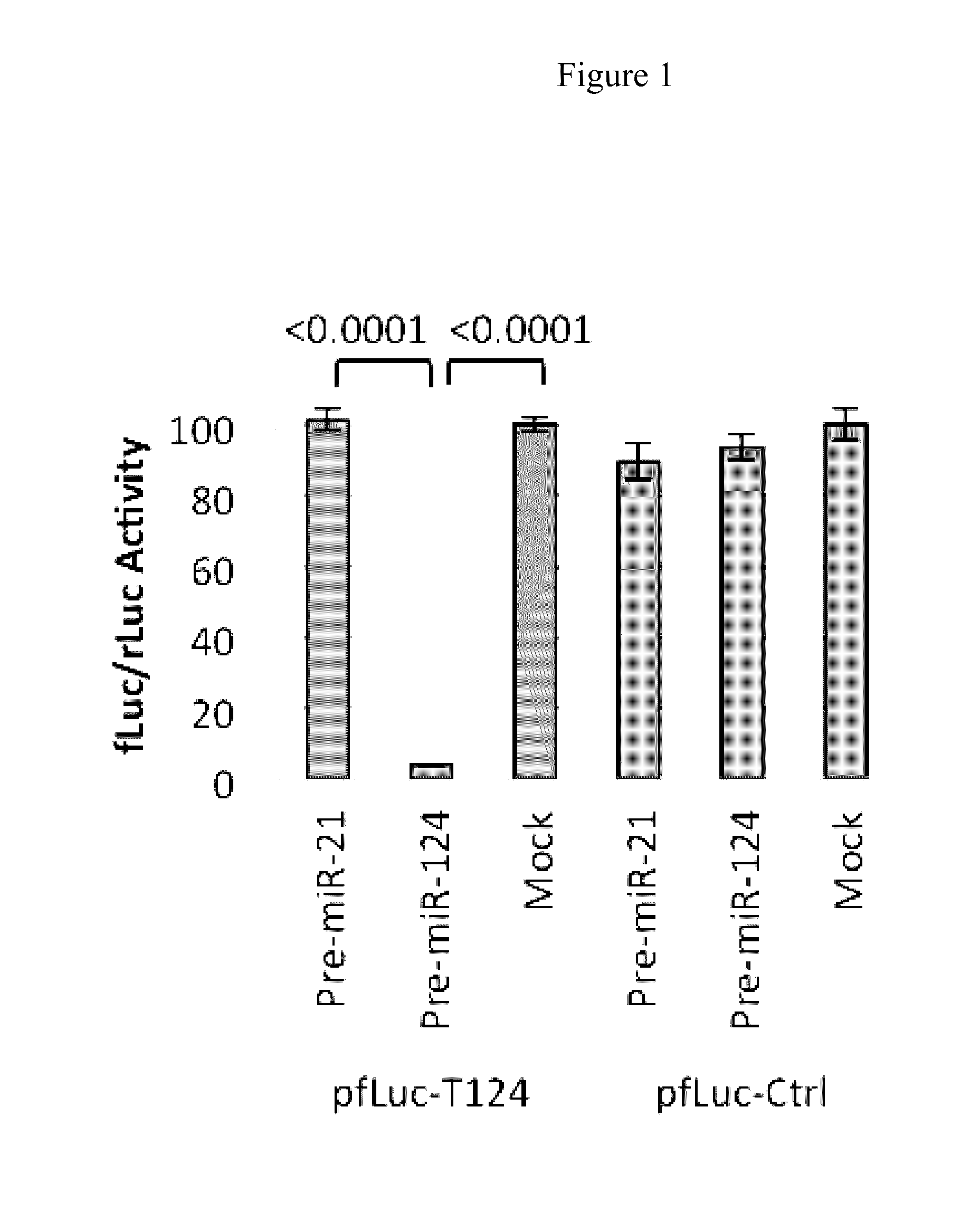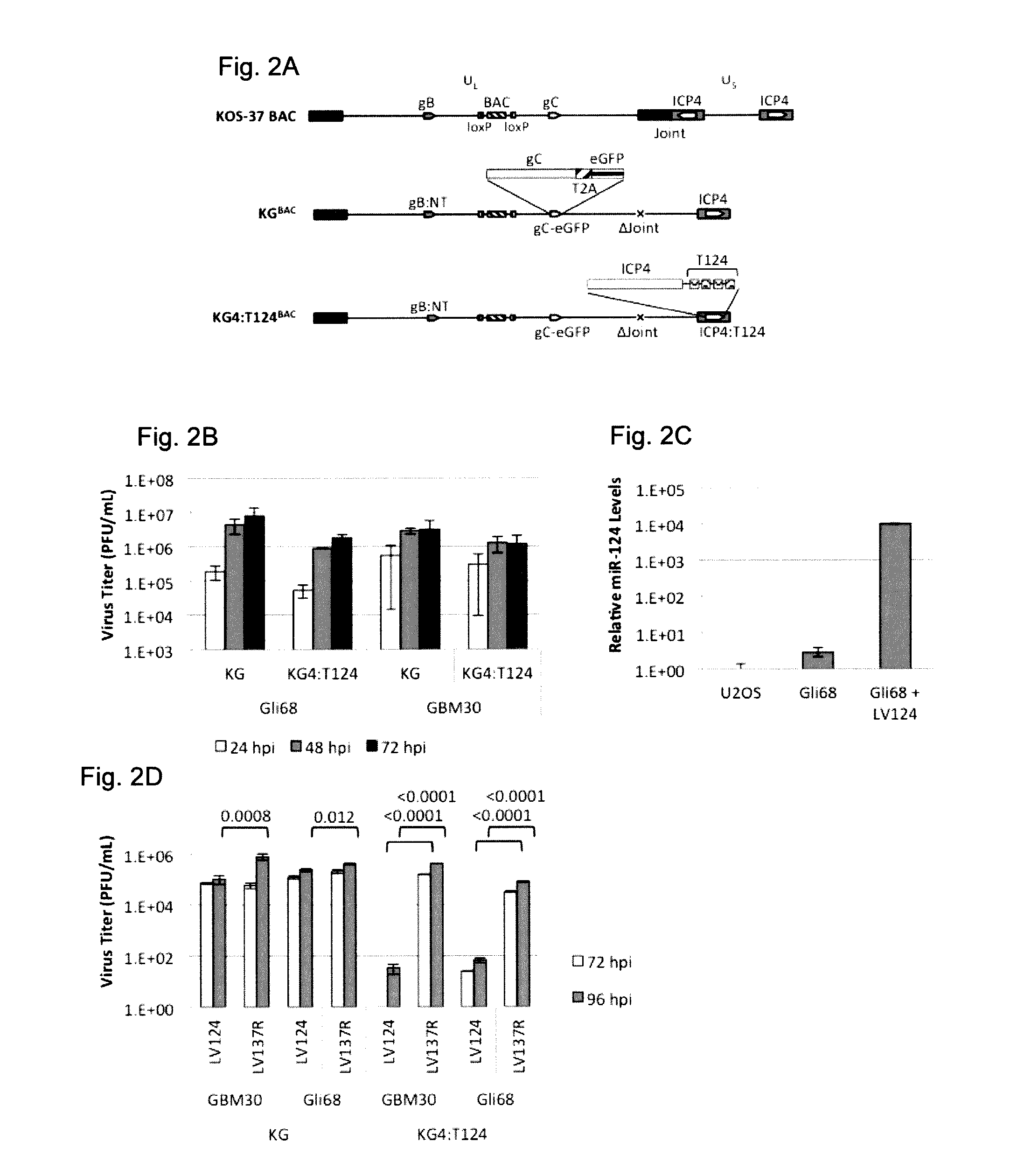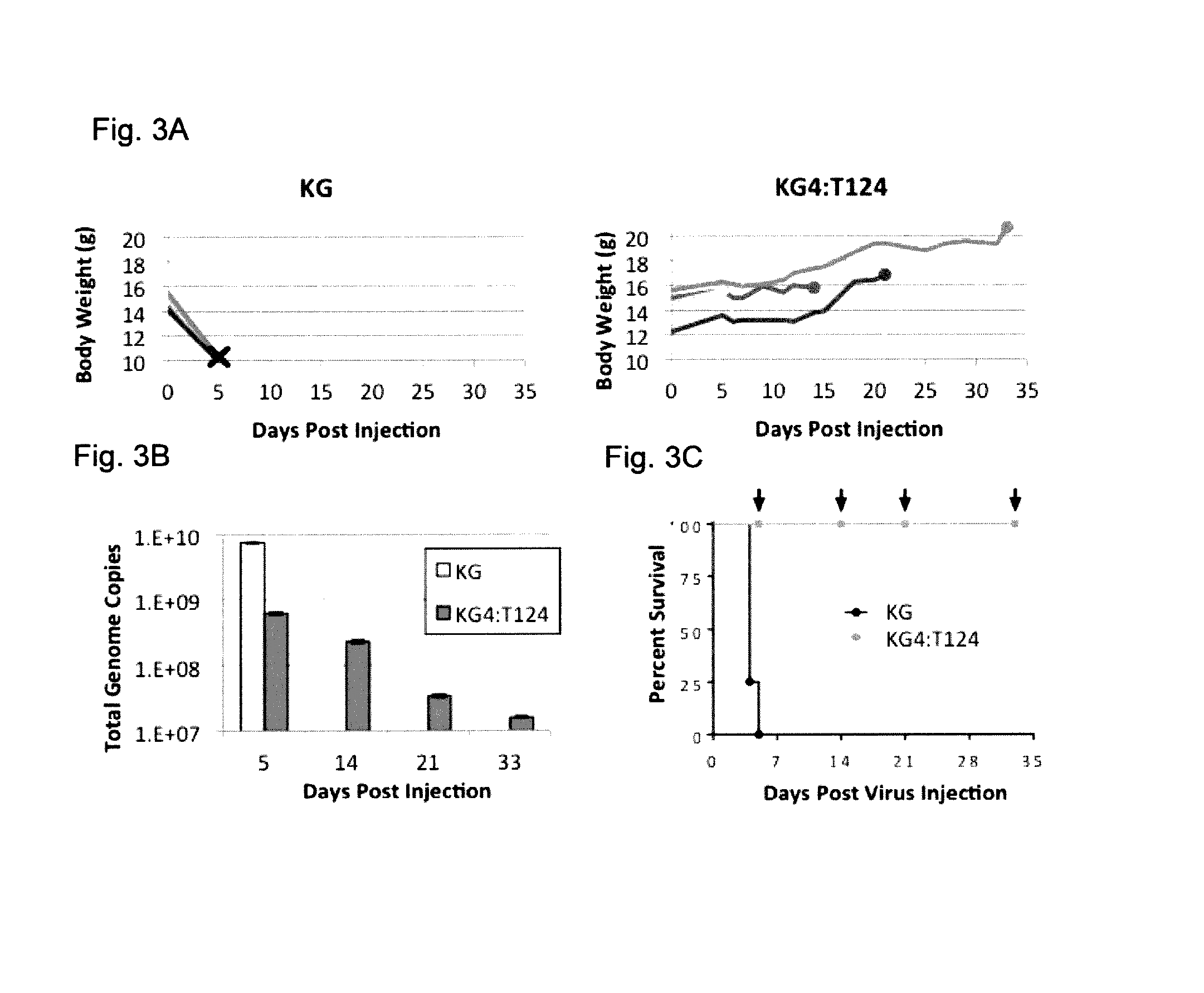Oncolytic hsv vector
a technology of oncolytic hsv and vector, which is applied in the direction of peptide sources, fusions for specific cell targeting, dsdna viruses, etc., can solve the problems of limited treatment efficacy in patient trials, and achieve the effect of preventing vector pathogenesis and a safer and more effective vector platform
- Summary
- Abstract
- Description
- Claims
- Application Information
AI Technical Summary
Benefits of technology
Problems solved by technology
Method used
Image
Examples
example 1
REFERENCES FOR EXAMPLE 1
[0067]1. Parker J N, Bauer D F, Cody J J, Markert J M. Oncolytic viral therapy of malignant glioma. Neurotherapeutics. 2009; 6:558-69.[0068]2. Grandi P, Peruzzi P, Reinhart B, Cohen J B, Chiocca E A, Glorioso J C. Design and application of oncolytic HSV vectors for glioblastoma therapy. Expert Rev Neurother. 2009; 9:505-17.[0069]3. Markert J M, Medlock M D, Rabkin S D, Gillespie G Y, Todo T, Hunter W D, et al. Conditionally replicating herpes simplex virus mutant, G207 for the treatment of malignant glioma: results of a phase I trial. Gene therapy. 2000; 7:867-74.[0070]4. Todo T. Oncolytic virus therapy using genetically engineered herpes simplex viruses. Frontiers in bioscience: a journal and virtual library. 2008; 13:2060-4.[0071]5. Uchida H, Marzulli M, Nakano K, Goins W F, Chan J, Hong C S, et al. Effective treatment of an orthotopic xenograft model of human glioblastoma using an EGFR-retargeted oncolytic herpes simplex virus. Molecular therapy: the journ...
example 2
REFERENCES FOR EXAMPLE 2
[0134]1. Grossman, S. A., et al., Survival of patients with newly diagnosed glioblastoma treated with radiation and temozolomide in research studies in the United States. Clin Cancer Res, 2010. 16(8): p. 2443-9.[0135]2. Assi, H., et al., Gene therapy for brain tumors: basic developments and clinical implementation. Neurosci Lett, 2012. 527(2): p. 71-7.[0136]3. Friedman, G. K., et al., Herpes simplex virus oncolytic therapy for pediatric malignancies. Mol Ther, 2009. 17(7): p. 1125-35.[0137]4. Mohyeldin, A. and E. A. Chiocca, Gene and viral therapy for glioblastoma: a review of clinical trials and future directions. Cancer J, 2012. 18(1): p. 82-8.[0138]5. Campadelli-Fiume, G., et al., Rethinking herpes simplex virus: the way to oncolytic agents. Rev Med Virol, 2011. 21(4): p. 213-26.[0139]6. Broberg, E. K. and V. Hukkanen, Immune response to herpes simplex virus and gamma134.5 deleted HSV vectors. Curr Gene Ther, 2005. 5(5): p. 523-30.[0140]7. Aghi, M., et al....
PUM
| Property | Measurement | Unit |
|---|---|---|
| depth | aaaaa | aaaaa |
| depth | aaaaa | aaaaa |
| depth | aaaaa | aaaaa |
Abstract
Description
Claims
Application Information
 Login to View More
Login to View More - R&D
- Intellectual Property
- Life Sciences
- Materials
- Tech Scout
- Unparalleled Data Quality
- Higher Quality Content
- 60% Fewer Hallucinations
Browse by: Latest US Patents, China's latest patents, Technical Efficacy Thesaurus, Application Domain, Technology Topic, Popular Technical Reports.
© 2025 PatSnap. All rights reserved.Legal|Privacy policy|Modern Slavery Act Transparency Statement|Sitemap|About US| Contact US: help@patsnap.com



